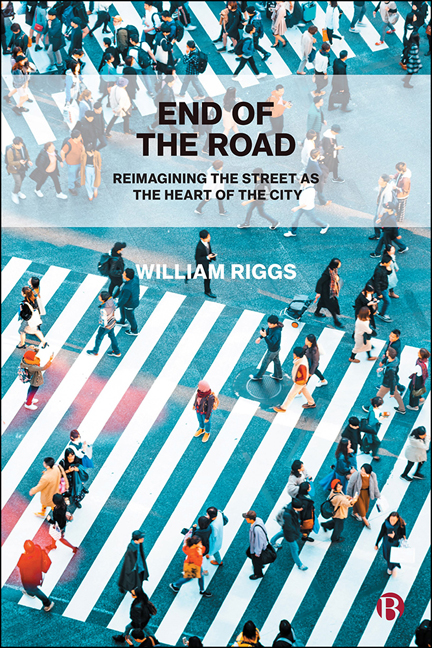Book contents
- Frontmatter
- Dedication
- Contents
- List of Figures and Tables
- Acknowledgments
- 1 Introduction
- 2 A Recent History of the Street
- 3 The Street for Transport
- 4 The Street as Economic Space
- 5 The Street as Social Space
- 6 The Street as Cultural Space
- 7 The Street as a Natural Space
- 8 Challenges to Ending the Road
- 9 Beyond Streets: Integrating Behavior
- 10 A Window into the Future: New Vehicles, New Streets
- 11 A Call to Action: Streets as the Heart of the City
- Appendix
- Notes
- References
- Index
10 - A Window into the Future: New Vehicles, New Streets
Published online by Cambridge University Press: 12 October 2022
- Frontmatter
- Dedication
- Contents
- List of Figures and Tables
- Acknowledgments
- 1 Introduction
- 2 A Recent History of the Street
- 3 The Street for Transport
- 4 The Street as Economic Space
- 5 The Street as Social Space
- 6 The Street as Cultural Space
- 7 The Street as a Natural Space
- 8 Challenges to Ending the Road
- 9 Beyond Streets: Integrating Behavior
- 10 A Window into the Future: New Vehicles, New Streets
- 11 A Call to Action: Streets as the Heart of the City
- Appendix
- Notes
- References
- Index
Summary
Neither a wise man nor a brave man lies down on the tracks of history to wait for the train of the future to run over him. (Dwight D. Eisenhower, 1952)
From 2012– 2013, Google ran an automated driving pilot with its fledging autonomous driving unit (Krafnic, 2019). The company emailed employees to see who might want a Lexus that would drive itself to work for them and were overwhelmed with responses. People wanted to be driven. The 60 best candidates were chosen for the program and given the car that would drive them to work.
The technology was good. On the freeways, the participants could turn on “autopilot” and not have to steer the vehicle nor pay as much attention. It was a hit, but after about a month people were so comfortable that they were really not paying attention. Instead, they were gaming, sending text messages, putting on makeup and even sleeping.
Clearly this was a turning point on the “tracks of history.” Google discontinued the program given what was happening in the vehicles. But the software had clearly surpassed the attentiveness of the humans in the vehicle. For the first time, a software based on high-level visual recognition and machine learning had operated in a way that allowed humans to disengage from the driving act; driving decisions could be made by software.
This new era of disruption and distraction is now fully upon us and I am both excited and frightened by the possibilities. Since 2013, Google has spun off its self-driving division as Waymo and an entire industry has developed around self-driving cars and automation of the driving act. Other companies with self-driving vehicles include Cruise Automation, Aurora and Tesla. As of 2019, there were 66 companies developing self-driving technology in California alone. Most are pursuing what engineers classify as level-4 technology, or the ability to drive in most conditions without assistance.
The idea for level 4 technology comes from levels of classification established by the Society of Automotive Engineers (SAE). Automated activities are classified from 1 to 5, with 1 being the lowest and 5 being the highest.
- Type
- Chapter
- Information
- End of the RoadReimagining the Street as the Heart of the City, pp. 131 - 143Publisher: Bristol University PressPrint publication year: 2022

